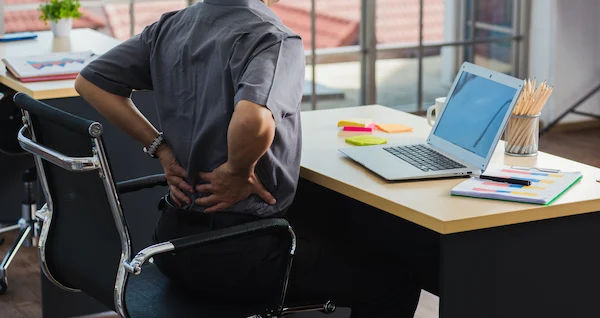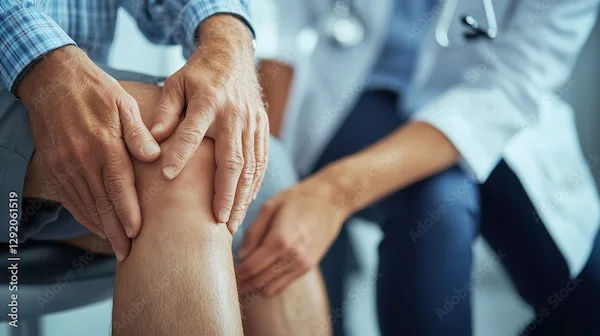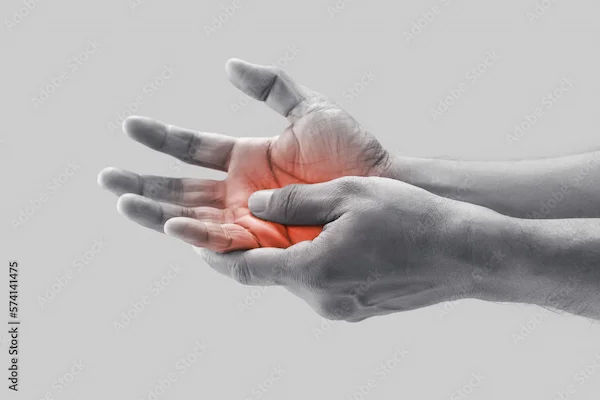A Guide to Treating Muscle Knots at Home
Learn effective, science-backed ways to relieve painful muscle knots at home with heat therapy, self-massage, stretching, and strengthening techniques for lasting relief.


Introduction
That familiar, nagging tightness in your shoulder or a stubborn, painful lump in your back—chances are, you’ve encountered a muscle knot. Medically known as myofascial trigger points, these irritating knots are a universal experience, affecting nearly everyone at some point. They can turn a simple head turn into a wince or make sitting at a desk an all-day battle. While often not a sign of a serious condition, they can significantly impact your quality of life. The good news is that you don't always need an expensive massage therapist to find relief. This comprehensive guide will empower you with the knowledge and practical steps to treat muscle knots effectively from the comfort of your home. We’ll dive into what causes them, provide a detailed step-by-step self-treatment plan, and help you understand when it’s time to seek professional help. Let’s unravel the mystery of muscle knots and take control of your muscle health.
What Exactly Is a Muscle Knot?
A muscle knot isn't a literal tangle of muscle fibres like a knot in a rope. Instead, think of it as a small, hyper-irritable patch within a taut band of muscle tissue. When you press on it, it feels like a pea or a small bump, and it often refers pain to other areas. For example, a knot in your shoulder blade might cause a headache.
The Science Behind the Knot: Understanding Trigger Points
The prevailing theory suggests that muscle knots form when muscle fibres contract excessively and fail to release. This creates a cycle of distress: the contracted fibres squeeze local blood capillaries, reducing oxygen supply. This oxygen deprivation causes the release of inflammatory substances that sensitise nerves, leading to pain. The pain, in turn, causes you to tense up more, perpetuating the cycle. This cluster of contracted fibres and the surrounding biochemical chaos is what we feel as a myofascial trigger point.
Common Causes: Why Do You Get Muscle Knots?
Understanding the causes is the first step toward prevention. The most common culprits include:
1. Poor Posture: Slouching at a computer or craning your neck to look at a phone puts sustained stress on specific muscle groups.
2. Repetitive Movements: Activities like typing, lifting boxes, or even running can overwork certain muscles without adequate recovery.
3. Stress and Anxiety: Emotional stress leads to physical tension, often manifesting as tightened shoulders and neck muscles—prime real estate for knots.
4. Inactivity: Sitting for prolonged periods can cause muscles to stiffen and become weak, making them more susceptible to developing muscle tension.
5. Dehydration and Poor Nutrition: Muscles need proper hydration and nutrients to function optimally and repair themselves.
Consult a Physiotherapist for the best advice
Step-by-Step Guide: How to Treat Muscle Knots Yourself
Here is a practical, four-step method to release trigger points and find relief. Follow these steps in order for the best results.
Step 1: Apply Heat for Relaxation
Before you start pressing on a painful knot, it’s helpful to relax the muscle. Heat increases blood flow, which delivers oxygen and nutrients while flushing out inflammatory substances. It also makes the muscle tissue more pliable, making the next steps more effective.
How to Apply Heat Correctly
Method: Use a heating pad, a warm, damp towel, or take a warm shower/bath.
Duration: Apply heat for 15-20 minutes.
Tip: Ensure the heat is warm and comfortable, not scalding hot. You can do this while watching TV or reading to relax fully.
Step 2: Self-Massage Techniques to Release Tension
This is the core of self-treatment. The goal is to apply direct, sustained pressure to the knot to encourage blood flow and signal the muscle fibres to release.
Using Your Hands: Thumb and Knuckle Pressure
Here’s how to effectively use your hands to target muscle knots:
• For the Neck and Shoulders: Use the fingertips of your opposite hand to probe the muscle until you find the tender spot. Apply firm, steady pressure for 30-60 seconds. You should feel a "good hurt." Breathe deeply as you hold the pressure. The pain should gradually diminish.
• For Hard-to-Reach Back Knots: Make a fist and use your knuckles to press into the knot against a wall or the back of a chair.
Using Tools: Lacrosse Balls and Foam Rollers
Tools can provide deeper pressure with less effort. Here are some simple tools that can help you release muscle knots more effectively:
• Lacrosse Ball: Excellent for pinpoint accuracy. Place the ball between your body and a wall or the floor. Gently roll until you find the knot and then hold pressure, or make very small, slow movements over the area. Idea for a custom image: A diagram showing the correct placement of a lacrosse ball against a wall to target a shoulder blade knot.
• Foam Roller: Ideal for larger muscle groups like the back, thighs, and calves. Use your body weight to control the pressure. Roll slowly and pause on any tender spots.
Step 3: Stretch Gently to Lengthen the Muscle
After releasing the knot, it’s crucial to gently stretch the muscle to restore its normal length and prevent it from immediately tightening back up.
Effective Stretches for Common Knot Locations
Here are some effective stretches to target common muscle knot areas:
• Upper Trapezius (Neck/Shoulder) Stretch: Sit upright. Gently tilt your head to one side, bringing your ear toward your shoulder. Hold for 30 seconds. Repeat on the other side.
• Levator Scapulae (Back of Neck) Stretch: Sit upright. Look down and slightly to the side, as if looking into your armpit. Gently pull your head further into the stretch with your hand. Hold for 30 seconds.
• Idea for a custom infographic: A simple illustration demonstrating these two key stretches, with labels for the targeted muscles.
Step 4: Strengthen to Prevent Recurrence
If a muscle is chronically knotted, it’s often a sign of weakness. Strengthening the surrounding supportive muscles provides stability. For example, strengthening your mid-back and rotator cuff muscles can help prevent knots in your upper shoulders caused by poor posture.
When to Seek Professional Help
While self-care is powerful, it has its limits. If you experience any of the following, it's wise to consult a healthcare professional:
1. The pain is severe, sharp, or debilitating.
2. Your condition does not improve after two weeks of consistent self-care.
3. The knot is accompanied by numbness, tingling, or weakness in your arms or legs.
4. You notice significant swelling or redness in the area.
In these cases, consulting a doctor or physiotherapist online with Apollo24|7 can provide a proper diagnosis and a tailored treatment plan, which may include advanced techniques like dry needling or physical therapy.
Conclusion
Muscle knots are a common, yet manageable, part of life. By understanding what they are and why they form, you can move from frustration to empowerment. The step-by-step guide provided—centred on heat, mindful self-massage, stretching, and strengthening—gives you a powerful toolkit to treat muscle knots on your own terms. Remember, listening to your body is paramount. While self-care can resolve most issues, persistent or severe pain is a signal to seek expert guidance. By taking a proactive approach, you can keep your muscles supple, reduce pain, and improve your overall well-being. Start with one simple stretch or a few minutes of self-massage today—your body will thank you.
Consult a Physiotherapist for the best advice
Consult a Physiotherapist for the best advice

Ms.jagritee Priyadarshinee
Physiotherapist And Rehabilitation Specialist
11 Years • MPT, M.SC, FNR
Guwahati
Apollo Hospitals G S Road, Guwahati

Ms. Seema Grover
Physiotherapist And Rehabilitation Specialist
29 Years • PT ( M PT Ortho), Certified Lymphedema Therapist
Delhi
Apollo Hospitals Indraprastha, Delhi
(25+ Patients)

Mr. Yogesh Mandhyan
Physiotherapist And Rehabilitation Specialist
20 Years • Dip (Physiotherapy), Bach. (Physiotherapy)
Lucknow
Apollomedics Super Speciality Hospital, Lucknow
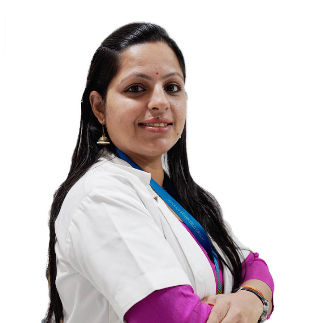
Ms. Richa Sharma
Physiotherapist And Rehabilitation Specialist
12 Years • MPT,MIAP
Noida
Apollo Hospitals Sector 26, Noida
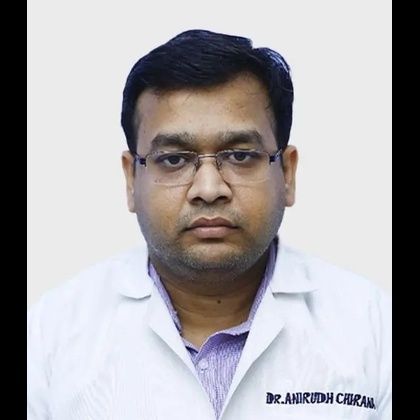
Dr. Anirudh Chirania
Physiatrist
5 Years • MBBS, DNB, FIPM
Hyderabad
Apokos Rehabilitation Hospital Jubilee Hills, Hyderabad
Consult a Physiotherapist for the best advice

Ms.jagritee Priyadarshinee
Physiotherapist And Rehabilitation Specialist
11 Years • MPT, M.SC, FNR
Guwahati
Apollo Hospitals G S Road, Guwahati

Ms. Seema Grover
Physiotherapist And Rehabilitation Specialist
29 Years • PT ( M PT Ortho), Certified Lymphedema Therapist
Delhi
Apollo Hospitals Indraprastha, Delhi
(25+ Patients)

Mr. Yogesh Mandhyan
Physiotherapist And Rehabilitation Specialist
20 Years • Dip (Physiotherapy), Bach. (Physiotherapy)
Lucknow
Apollomedics Super Speciality Hospital, Lucknow

Ms. Richa Sharma
Physiotherapist And Rehabilitation Specialist
12 Years • MPT,MIAP
Noida
Apollo Hospitals Sector 26, Noida

Dr. Anirudh Chirania
Physiatrist
5 Years • MBBS, DNB, FIPM
Hyderabad
Apokos Rehabilitation Hospital Jubilee Hills, Hyderabad
More articles from Pain Management
Frequently Asked Questions
1. How long does it take for a muscle knot to go away?
With consistent self-treatment, a minor knot can improve within a few days. More persistent knots may take a couple of weeks. Consistency is more important than intensity.
2. Can a muscle knot feel like a lump?
Yes. A chronic, well-developed trigger point can feel like a firm, pea-sized lump or a small bundle of tense tissue within the muscle.
3. Is it better to massage a knot hard and fast?
No. Slow, sustained pressure is more effective. Aggressive, fast rubbing can irritate the tissue and cause more inflammation. The goal is to calm the nervous system and encourage release.
4. What is the difference between a muscle knot and a pinched nerve?
A muscle knot causes referred aching pain from within the muscle. A pinched nerve typically causes sharper, shooting pain, along with numbness, tingling, or weakness along the nerve's pathway.
5. Can dehydration cause muscle knots?
Absolutely. Muscles are about 75% water. Dehydration makes muscle tissue more susceptible to cramping and the formation of muscle adhesions.
